12 Transformative Flowers That Start With T + Growing Guide Charts

This post follows our research editorial guidelines.

Welcome to the world of blossoms, starting with the letter T! In this article, we’ll explore twelve beautiful flowers that start with T and discover their unique beauty.
As we delve into T flowers, we’ll unveil their vibrant colors and mesmerizing fragrances and provide comprehensive growing guides.

So, let’s delve into their tending tactics and learn to nurture these floral treasures, with finesse and tact.
Quickly Find Flowers That Start With T
1. Tall Bearded Iris (Iris × germanica)

The Tall Bearded Iris, or Iris × germanica, is a majestic, tall, elegant purple flower. It has a rich history dating back to ancient times when it symbolized power and wisdom.
Provide ample sunlight, well-drained soil, and regular watering for this beauty.
| Botanical Name: | Iris × germanica |
| Growth Rate: | Moderate |
| Native Range: | Europe, the Middle East |
| Hardiness Zones: | 3-9 |
| Soil Needs: | Well-drained, fertile |
| Exposure: | Full sun |
| Blooming Period: | Spring |
2. Tatarian Aster (Aster tataricus)

The Tatarian Aster, or Aster Tataricus, is a lovely flower with enchanting purple hues. It has healing properties and has been associated with celestial wonders. Commonly grown as a wildflower Asters are typically low-maintenance plants.
This plant thrives in well-drained soil, loves sunlight, and adds a celestial touch to any garden.
| Botanical Name: | Aster tataricus |
| Growth Rate: | Fast |
| Native Range: | Asia |
| Hardiness Zones: | 4-9 |
| Soil Needs: | Moist, well-drained |
| Exposure: | Full sun to part shade |
| Blooming Period: | Late summer to fall |
3. Texas Mountain Laurel (Sophora secundiflora)
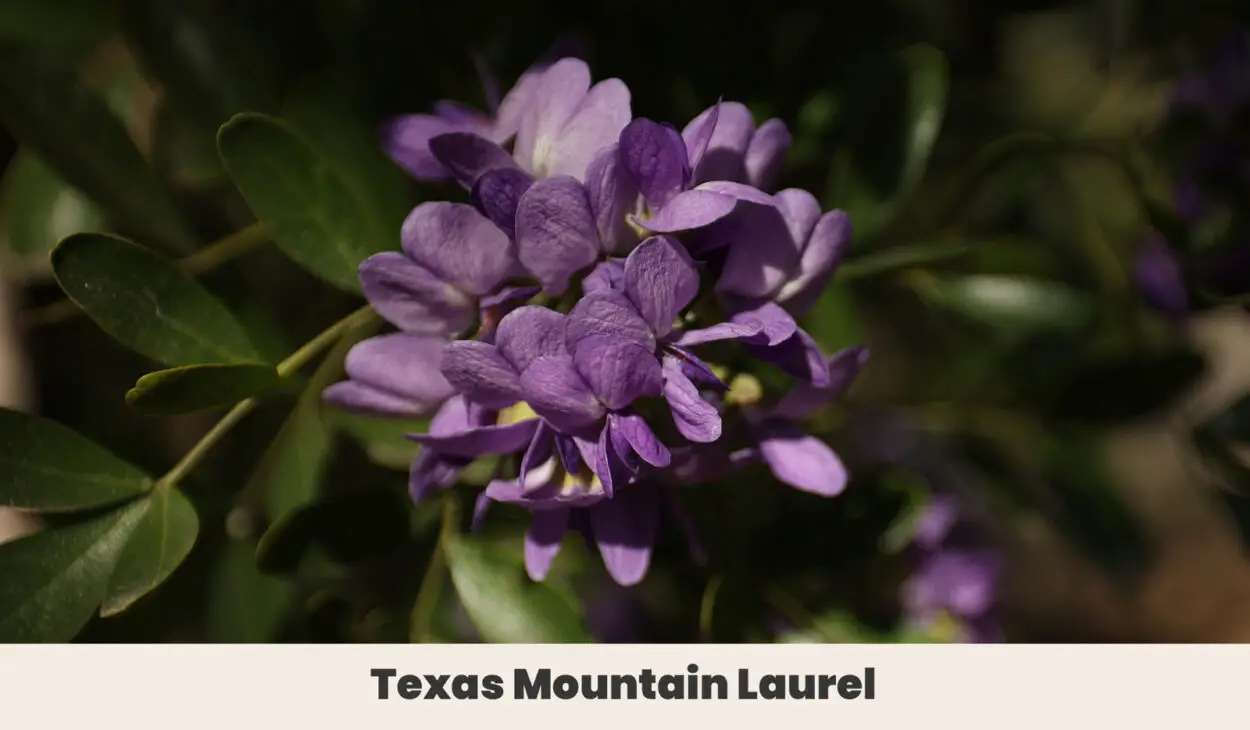
The Texas Mountain Laurel, or Sophora secundiflora, is a fragrant beauty from Texas. It carries a rich Native American history, symbolizing strength and resilience.
Moreover, it emits a heavenly scent. To care for this aromatic gem, plant it in arid soil and water it sparingly. The Texas Mountain Lauren is a tough tree with deep purple petal clusters praised for their drought tolerance.
| Botanical Name: | Sophora secundiflora |
| Growth Rate: | Slow |
| Native Range: | Southwestern United States, Mexico |
| Hardiness Zones: | 7-11 |
| Soil Needs: | Well-drained, sandy loam |
| Exposure: | Full sun |
| Blooming Period: | Spring |
4. Thyme (Thymus praecox)
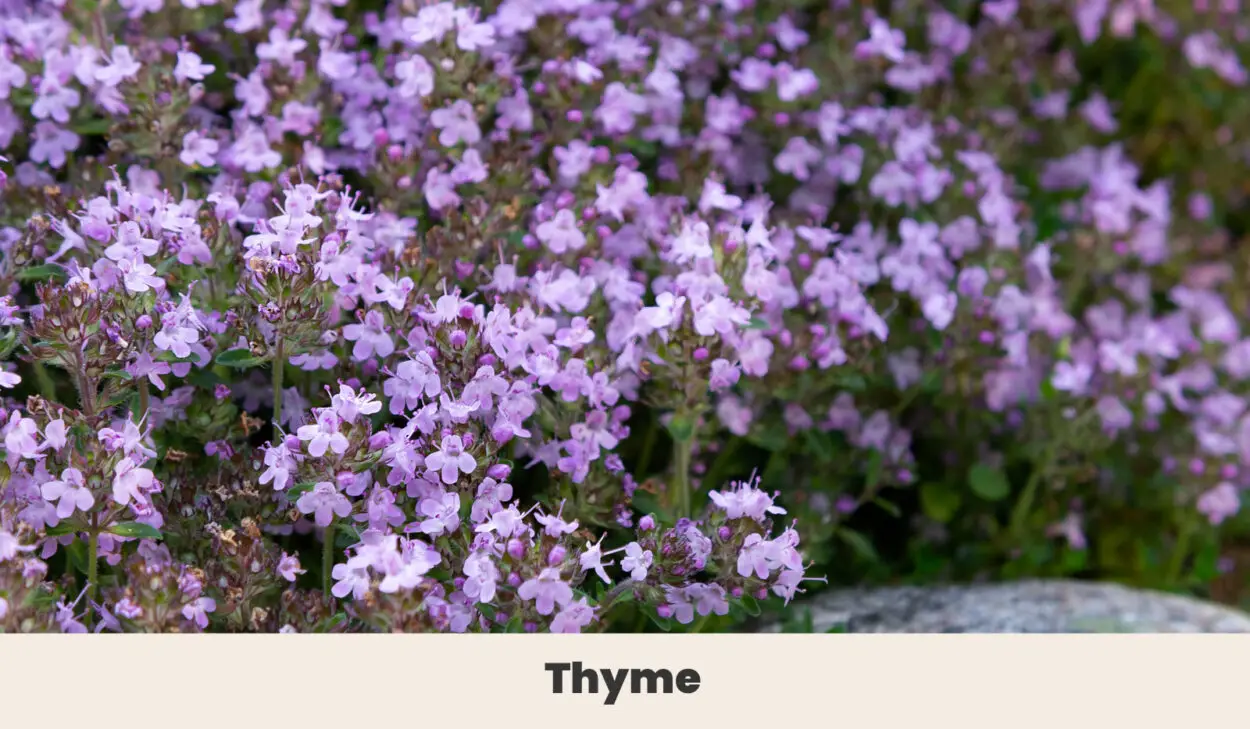
Thyme, scientifically known as Thymus praecox, is a little low-growing wondering perennial that fills the air with its delightful fragrance.
You can use thyme in cooking, taking certain meals to the next level. This herb thrives in sunny spots and requires moderate watering.
| Botanical Name: | Thymus praecox |
| Growth Rate: | Moderate |
| Native Range: | Europe, North Africa |
| Hardiness Zones: | 4-9 |
| Soil Needs: | Well-drained, sandy |
| Exposure: | Full sun |
| Blooming Period: | Summer |
5. Thimbleweed (Anemone virginiana)
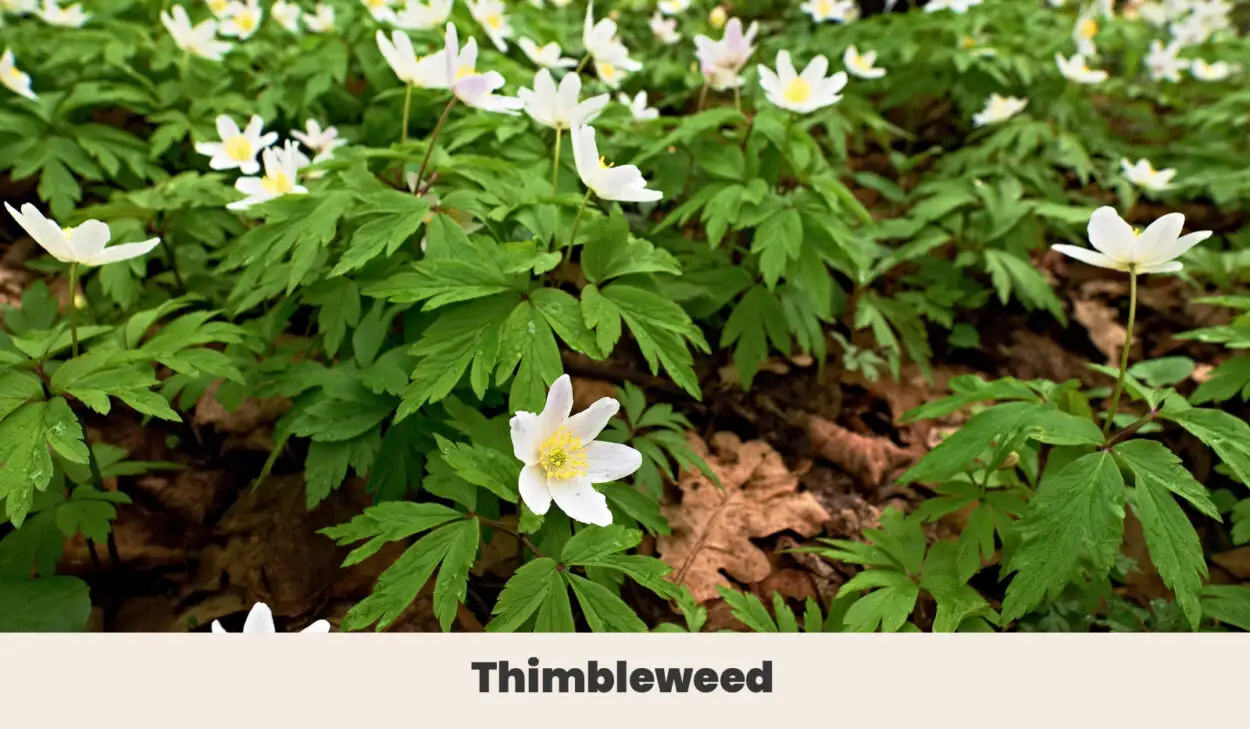
The Thimbleweed, or Anemone virginiana, is a delicate wildflower with white petals that can grow well in full sun but prefers a bit of shade.
In folklore, it’s associated with magical properties and love charms. To care for it, plant it in fertile soil and provide shade.
| Botanical Name: | Anemone virginiana |
| Growth Rate: | Moderate |
| Native Range: | North America |
| Hardiness Zones: | 4-8 |
| Soil Needs: | Moist, well-drained |
| Exposure: | Part shade to full sun |
| Blooming Period: | Late spring to early summer |
6. Tickseed (Coreopsis palmata)
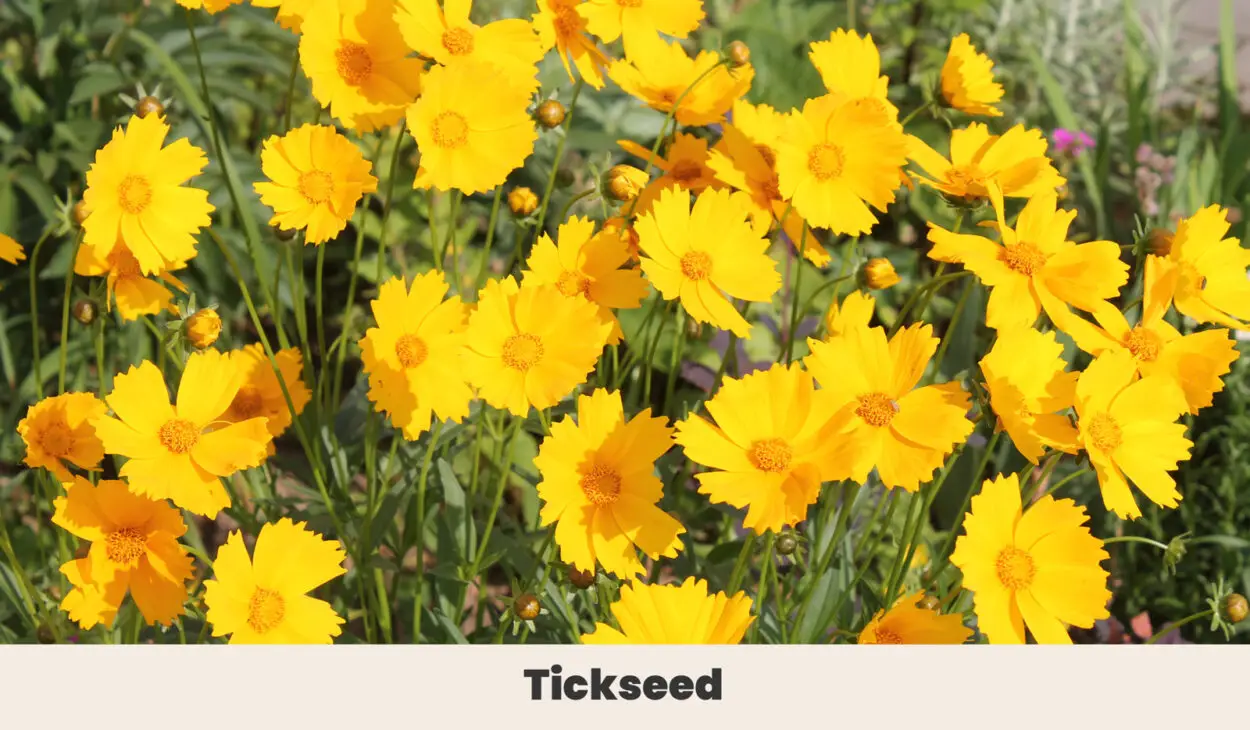
Tickseed, scientifically known as Coreopsis Palmata, is sunshine with summer-long golden blooms. It represents endurance and positivity, embodying the spirit of prairies.
To care for this cheerful flower, choose well-drained soil, offer a lot of sunlight, and enjoy the radiant petals that brighten your garden.
| Botanical Name: | Coreopsis Palmata |
| Growth Rate: | Fast |
| Native Range: | North America |
| Hardiness Zones: | 3-8 |
| Soil Needs: | Well-drained, average |
| Exposure: | Full sun |
| Blooming Period: | Summer |
7. Toad Lily (Tricyrtis macrantha)
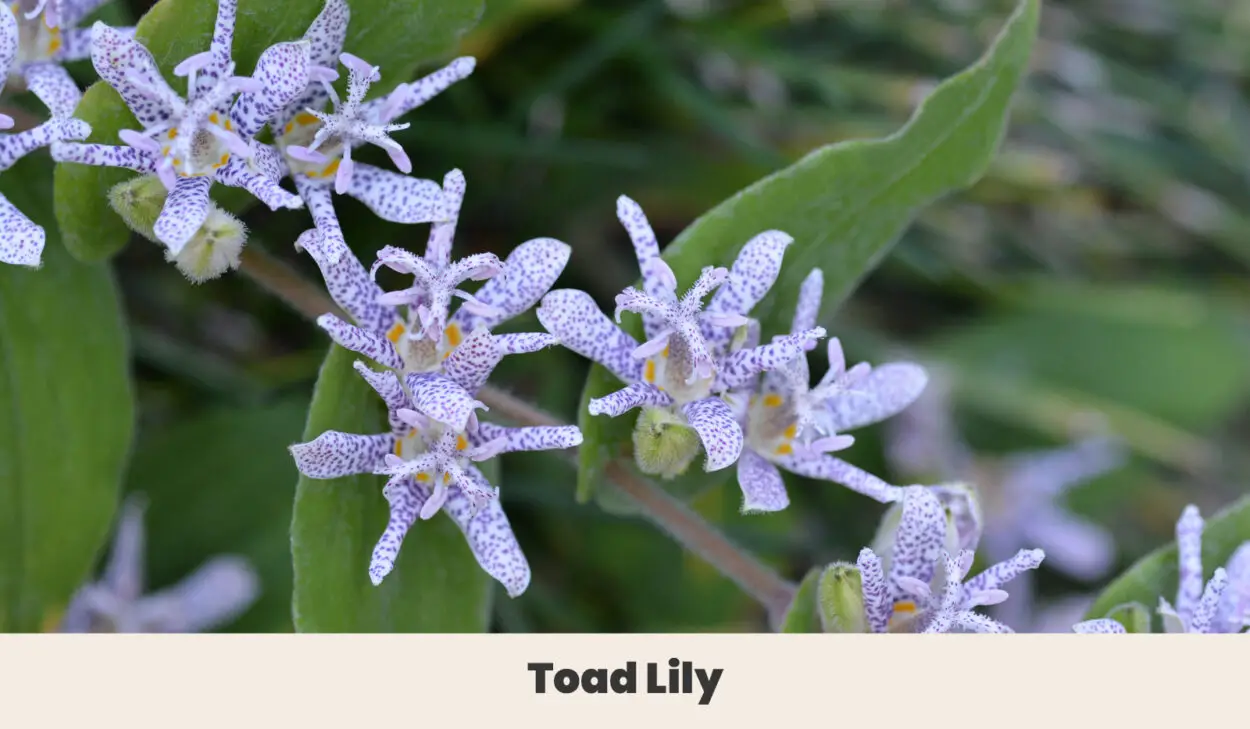
The Toad Lily, or Tricyrtis Macrantha, is a gorgeous flower that thrives in shaded gardens.
The unique speckled petals of this plant and folklore connect it to transformation and hidden treasures. To care for this enchanting lily, provide shade and moist soil.
| Botanical Name: | Tricyrtis macrantha |
| Growth Rate: | Moderate |
| Native Range: | Asia |
| Hardiness Zones: | 4-8 |
| Soil Needs: | Moist, well-drained |
| Exposure: | Part shade to full shade |
| Blooming Period: | Late summer to fall |
8. Transvaal Daisy (Gerbera jamesonii)

The Transvaal Daisy, or Gerbera jamesonii, is a vibrant charmer with a rainbow of hues. Originating from South Africa, it symbolizes purity and innocence.
This cheerful beauty wants plenty of sunlight and well-drained soil. Grow this daisy along with other flowers in your garden that look like daisies for a kaleidoscope of color creations.
| Botanical Name: | Gerbera jamesonii |
| Growth Rate: | Moderate |
| Native Range: | South Africa |
| Hardiness Zones: | 8-11 |
| Soil Needs: | Well-drained, fertile |
| Exposure: | Full sun to part shade |
| Blooming Period: | Spring to summer |
9. Tulip (Tulipa)
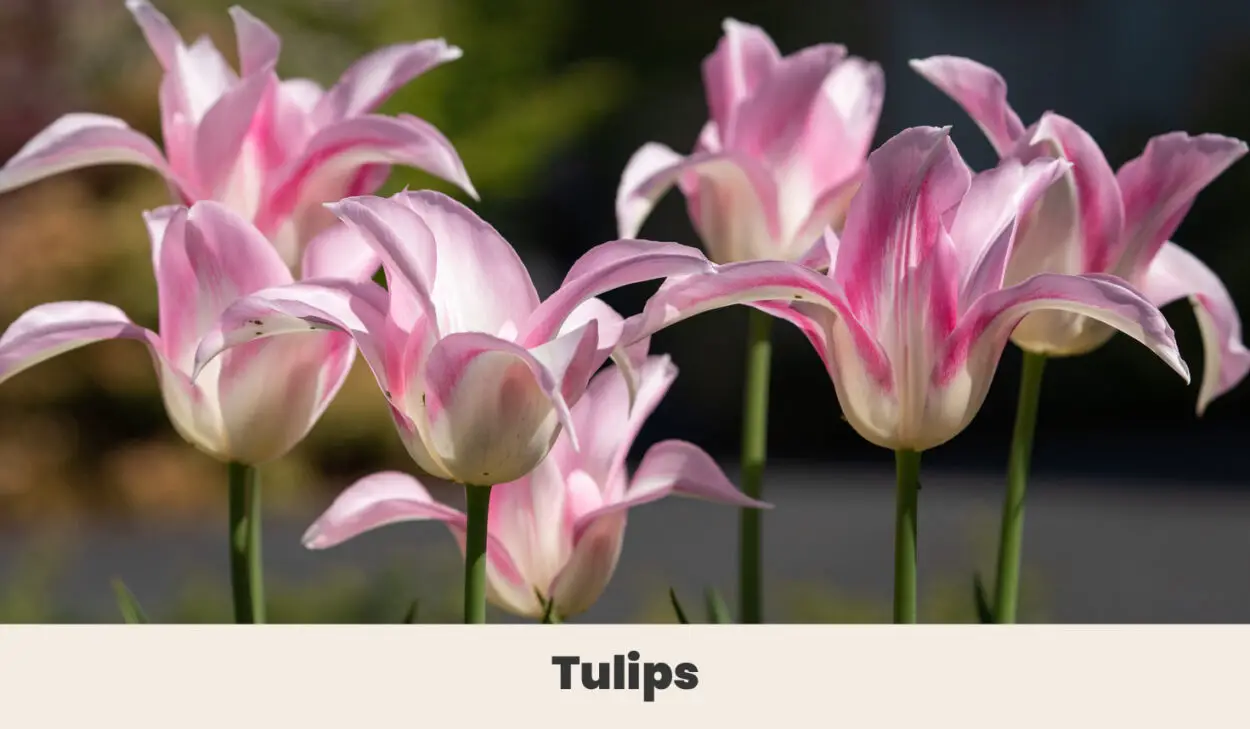
The Tulip, scientifically known as Tulipa, is a timeless flower with elegance and vibrant colors. It has historical significance, especially during the Ottoman Empire, symbolizing love and abundance.
Tulips come in a variety of sizes, colors, and shapes. From the prized torn petals to star-shaped purple and pink blooms there is a little bit of everything for your garden to grow. Plant it in well-drained soil to care for this graceful beauty and offer ample sunlight.
| Botanical Name: | Tulipa |
| Growth Rate: | Moderate |
| Native Range: | Asia, Europe, Africa |
| Hardiness Zones: | 3-8 |
| Soil Needs: | Well-drained, fertile |
| Exposure: | Full sun |
| Blooming Period: | Spring |
10. Trumpet Flower (Tecoma stans)
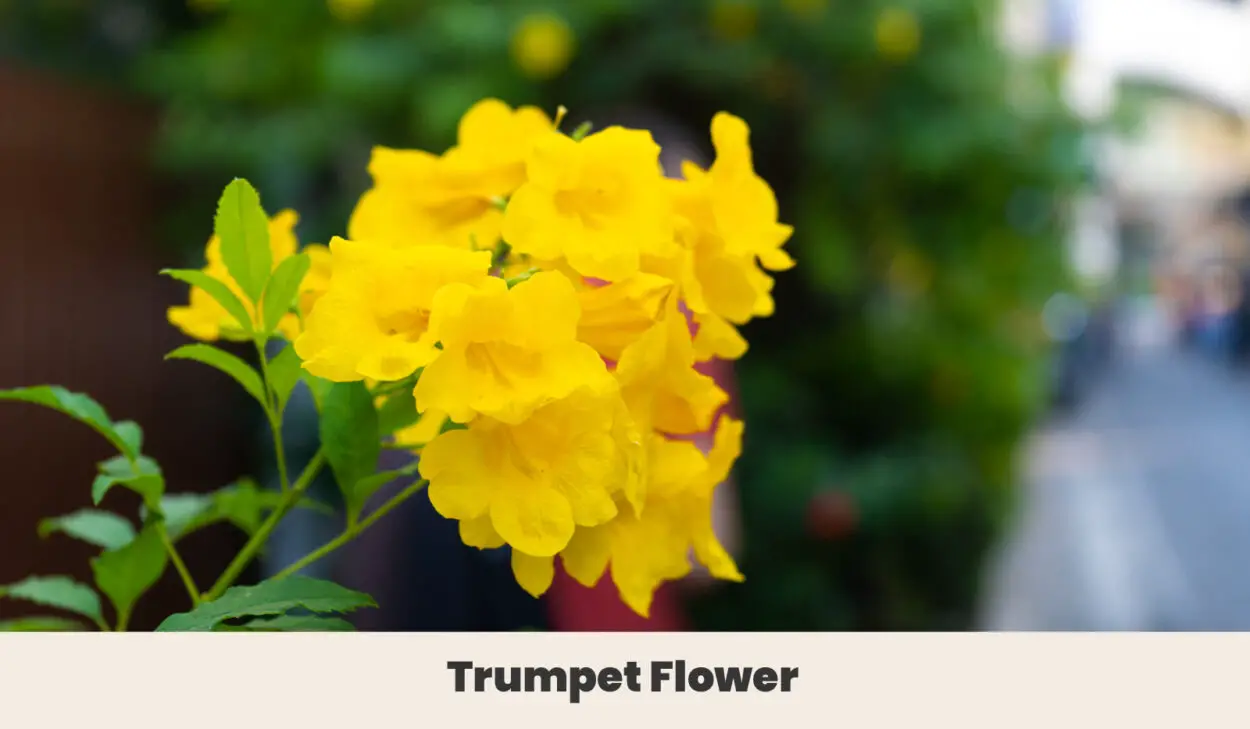
The Trumpet Flower, or Tecoma stans, is a lovely flower with lovely trumpet-shaped blossoms.
It adds a touch of beauty to any landscape. To care for this lovely plant, ensure well-drained soil and ample sunlight, and watch as it blooms gracefully.
| Botanical Name: | Tecoma stans |
| Growth Rate: | Fast |
| Native Range: | North and South America |
| Hardiness Zones: | 9-11 |
| Soil Needs: | Well-drained, loamy |
| Exposure: | Full sun |
| Blooming Period: | Spring to fall |
11. Toadshade (Trillium)
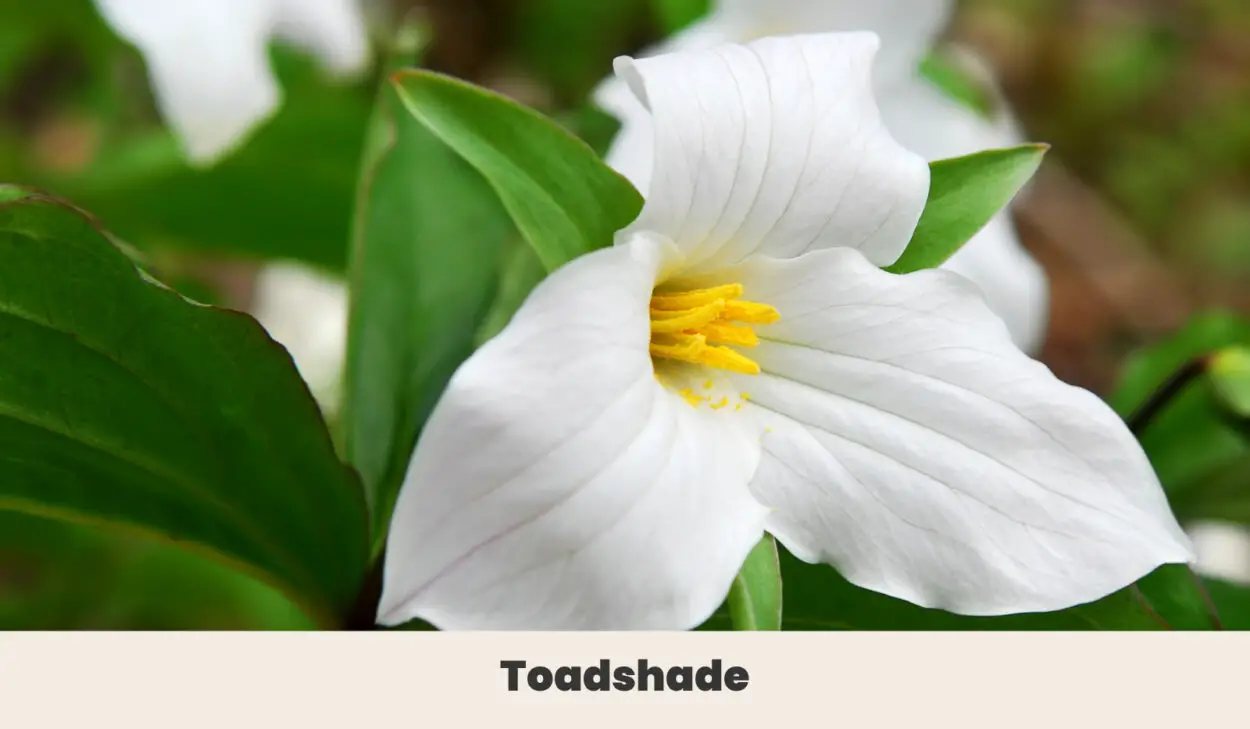
The Toadshade, or Trillium, is a charming woodland flower with subtle beauty. It thrives in shaded areas and adds a magical touch to gardens. This flower holds a special place in my heart as it represents my province Ontario.
To care for this delicate plant, provide shade and moist soil. Avoid pruning in winter to let the plant regenerate flowers naturally.
| Botanical Name: | Trillium |
| Growth Rate: | Slow |
| Native Range: | North America, Asia |
| Hardiness Zones: | Varies by species (generally 4-9) |
| Soil Needs: | Moist, well-drained, humus-rich |
| Exposure: | Part shade to full shade |
| Blooming Period: | Spring to early summer |
12. Tansy (Tanacetum vulgare)
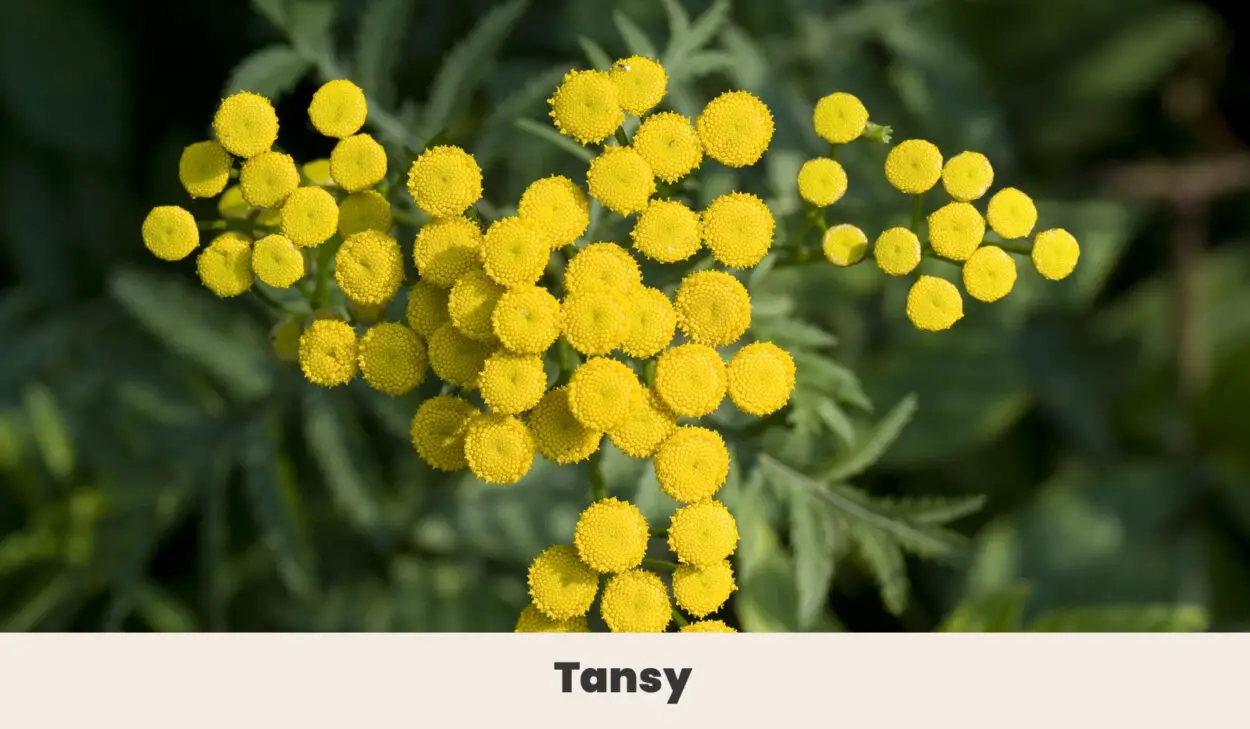
Tansy, scientifically known as Tanacetum vulgare, is a pleasant flowering plant with aromatic leaves. It has a long history of traditional uses and symbolizes resilience.
To care for this plant that’s often confused with a common yellow weed by ensuring it’s planted in well-draining soil and direct sunlight.
| Botanical Name: | Tanacetum vulgare |
| Growth Rate: | Fast |
| Native Range: | Europe, Asia |
| Hardiness Zones: | 4-9 |
| Soil Needs: | Well-drained, fertile |
| Exposure: | Full sun to part shade |
| Blooming Period: | Summer |
Final Thoughts
Exploring the world of flowers that start with T has been a magical journey filled with vibrant colors, delicate aromas, and fascinating botanical features.
Whether you’re a seasoned gardener seeking to expand your floral repertoire or simply a lover of nature’s exquisite creations, the growing guides above for each one will serve as valuable companions in your horticultural endeavors.
Cultivating these blooms requires patience, care, and a touch of creativity, but it also comes with many awards.
So, roll up your sleeves, grab your gardening tools, and let the splendor of these flowers that start with T bloom in your paradise.

